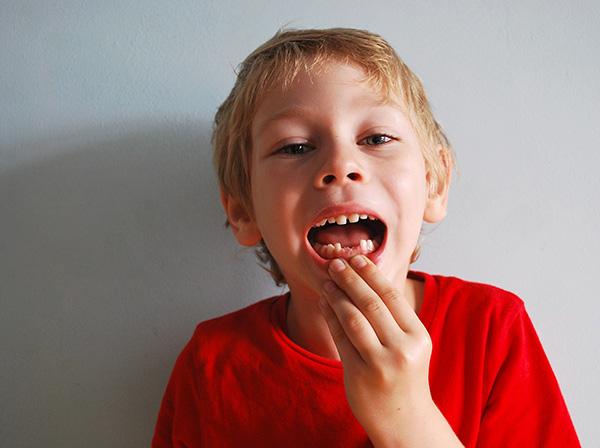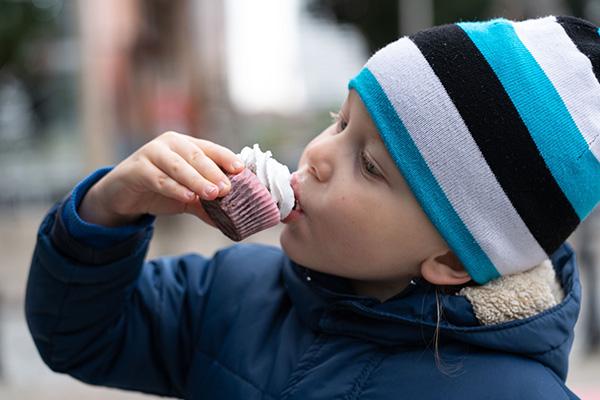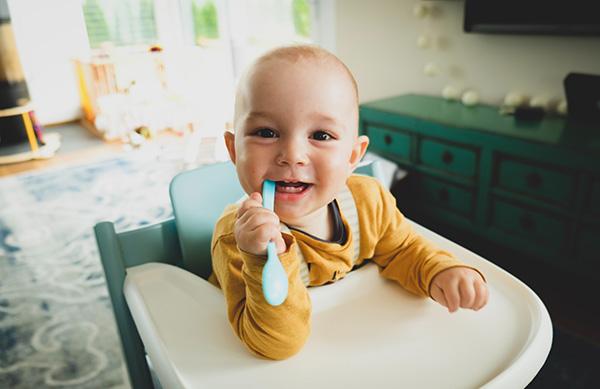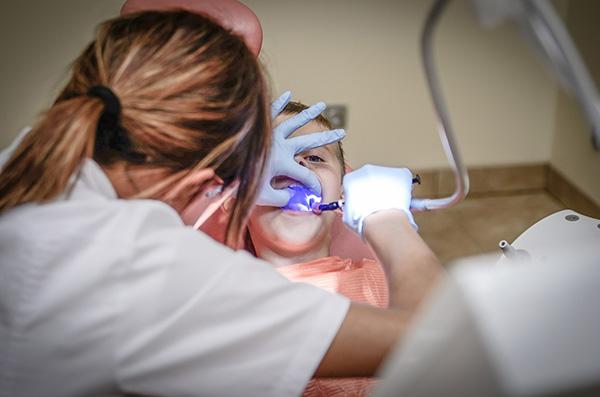Caring for Your Children's Teeth
Early childhood cavities are one of the most common chronic diseases of children in the world. It is important to start a good homecare routine to support baby teeth throughout development. Poor oral health in children can affect the adult teeth, nutritional intake, and speech development.
Table of Contents
What age do children's teeth fall out?

Kids will start to lose their top and bottom front teeth around age 5-6. Around the same time, the first permanent molars will erupt all the way in the back behind the baby molars. The baby molars will be replaced by permanent premolars around the age of 10-12. Around this age, the second adult molars and adult canines will grow in.
- It is important for good oral habits to be established early so that the baby molars can stay healthy and save space until the permanent premolars are finished developing and ready to erupt.
- External habits like using a pacifier and thumb sucking can interfere with the eruption of permanent teeth. These forces can lead to flared and misaligned teeth. They can also disturb the shape and growth of the roof of the mouth called the palate.
It is recommended that you take your child to the dentist around age 1 and continue to go every 6 months. Sometimes early intervention with specialists such as Orthodontists or Ears, Nose, and Throat doctors is needed.
Why are children's teeth getting more cavities?

According to the Centers for Disease Control and Prevention, around 1 in 5 children in the United States have at least one untreated cavity. It’s important to establish good oral hygiene habits now that carry out throughout their life. There are several factors that play into children’s increased risk for cavities.
Factors that Increase Cavity Risk
- Oral Hygiene: It is recommended for parents to assist children in their oral care up until around age 9. Kids need to develop better dexterity, if they can tie their shoes efficiently then they can manipulate the toothbrush properly.
- Primary Teeth: Baby teeth are more fragile than permanent teeth. The outside layer of a tooth is called enamel. This hard shell protects the tooth from stress, bacteria, and other negative forces. Primary teeth have a thinner layer of enamel compared to permanent teeth.
- Increased Sugar Intake: Sugar in processed and packaged foods and beverages continue to increase. Unfortunately, kids have increased their sugar consumption dramatically, especially in school and daycare settings.
- Additional Risk Factors: Orthodontic appliances and reatiners are common among adolescents. Braces can trap food and bacteria increasing the risk for gum disease and cavities. Children have busy schedules and don’t often have easy access to proper oral hygiene with school and extracurricular activities.
Pediatric Home Care
Brushing

We recommend helping children brush every morning and right before bed for 2 minutes, 2 times a day. Teach your kids to use small circular strokes, inside and out.
Flossing

When the baby molars start touching each other, it’s time to start helping your child floss. Start with floss picks until they’re ready to graduate to string floss.
Tools to Help your Children's Teeth
- Toothbrush – A smaller toothbrush head is perfect for tiny mouths and makes it easier for them to move and control the toothbrush.
- Toothpaste – Choose a toothpaste that has fluoride in it to protect against cavities. With assistance, children under three should use a small smear or grain of rice size. Children over three can start using a pea-size amount.
- Mouthwash – It is safe to start using a mouthwash when your child can safely swish and spit, usually around age 6. Practice swishing and spitting with a cup of water.
- Check out our Floss for Kids article for more tips.
Visit our store for simple printables to help make homecare fun!
Establishing a Dental Home

How can your dentist help your children's teeth?
- Routine Check-Ups: Children should see their hygienist and dentist every six months for a cleaning and exam. This will help stop the rise in cavities and keep their teeth strong.
- Routine X-rays: Radiographs can catch the start of cavities early so your dental team can intervene. Without x-rays, you cannot guarantee that cavities aren’t hiding in your children’s teeth.
- Fluoride Treatments: The more controlled, stronger Fluoride treatments your dental team provides can help strengthen the enamel. In certain cases, a higher Fluoridated prescription toothpaste is needed that your dental team can provide.
- Sealants: These are a protective, thin coating placed on the grooves of the tooth. Deep grooves can easily trap bacteria and food that the toothbrush can’t reach and cause cavities. For more information on sealants, check out our article Sealants On Molars.
- Orthodontic Screening: Ask your dental team if your child is ready for braces. Check out our Comprehensive Braces Guide to learn more.
Frequently Asked Questions
What order do kids lose teeth?
Around age 5-6, children will lose their front central and later incisors. Then they will lose their first baby molar that sits behind the canine. The canine follows and lastly the second molar. Every child is unique and the order may differ slightly. Talk to your dental professional today at your child’s dental cleaning.
How many teeth should a 5 year old have?
A five-year-old should have all 20 of their primary teeth. Children’s teeth will start to come out around age 5-6 and finish losing them around age 12-13.
What age do children's molars come in?
The first baby molar will come through around 13-18 months. The second baby molar will erupt around 23-33 months. The first adult molar will come in around age 6. The second adult molar will erupt around age 12. Each child is unique and may vary.
Take Home Smile Store
Visit our Take Home Smile store for educational brochures and other fun printables to help with oral hygiene. All products can be customized to fit your dental needs.



